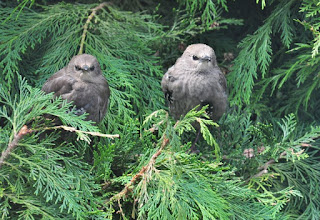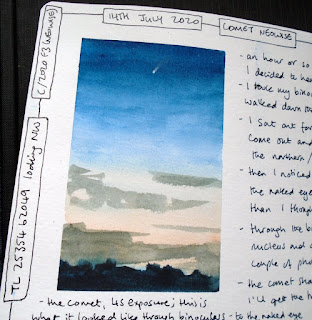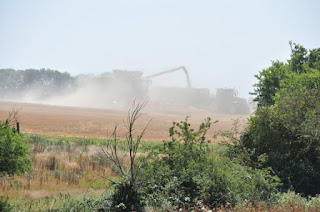Back in August I signed up for a virtual Land's End to John O' Groats challenge - 874 miles to be completed in a year. I'm alternating running and walking days, and the challenge has certainly got me out and about more regularly, especially walking. I usually just walk around the fields here in my corner of Cambridgeshire - nothing spectacular, but pleasant rural routes nonetheless.
And it was when I was out on one of these walks that I spotted my first ever Great Grey Shrike! I saw an unfamiliar bird flying away from me along the ditch at a field edge - found it in my binoculars (note - NEVER leave home without your binoculars!), and there it was, unmistakeable, a Great Grey Shrike with its black bandit mask, perched atop a scrubby bit of blackthorn. I watched it for a few minutes as it flew from perch to perch along the field edge, then further away down the far side of the field until it disappeared from sight. I continued my walk, which took me round the edge of the field. As I approached the far corner - there it was again! It popped back up and perched up on a stand of dog rose, then flew back across the field to where I'd first seen it, giving me a great view of its black, white-flashed wings.
I didn't really realise at the time what a rarity this bird is in the UK. I reported it to my local bird club, who sent me a UK rarities form to fill in and submit. I also recorded it on BirdTrack, and the whole thing has now prompted me to start keeping and submitting complete lists whenever I go for a walk around the fields (a habit I had fallen out of!)
Other October highlights for me included a Brambling in the rowan tree at the end of our drive. I've only ever seen them here two or three times over the last 10 years, so this was a treat!
And I've been adding weekly to my perpetual journal, bits and pieces I've found while out walking mostly...
And of course the wet and mild weather has been great for fungi. I took a couple of hours off to go and walk around a marvellously muddy Waresley Wood.
I even found a fab little beetle - a False ladybird beetle Endomychus coccineus, which I submitted to iRecord.
As we head into November the skies are stormy, and once again lockdown is looming. It will surely be a hard winter for many people; just remember, nature endures, the rhythms of the seasons march on, and the wild, in all its forms, continues to be there for us, if we will only stop and notice it.





















































